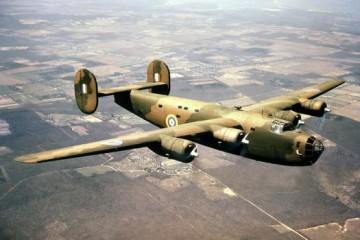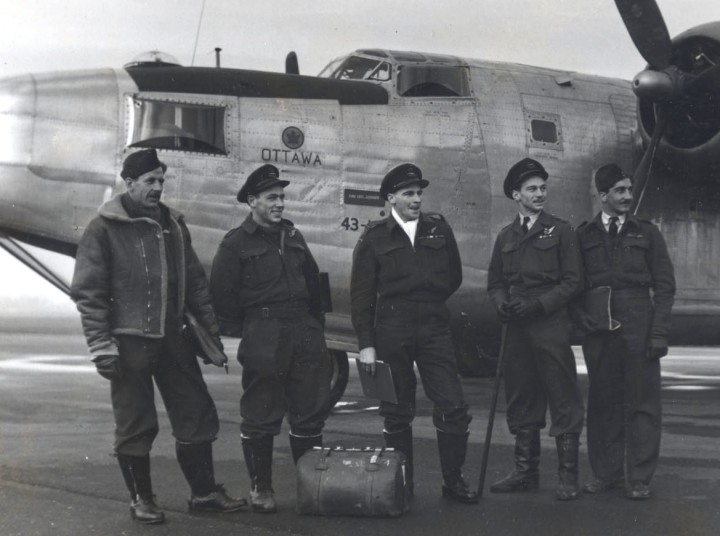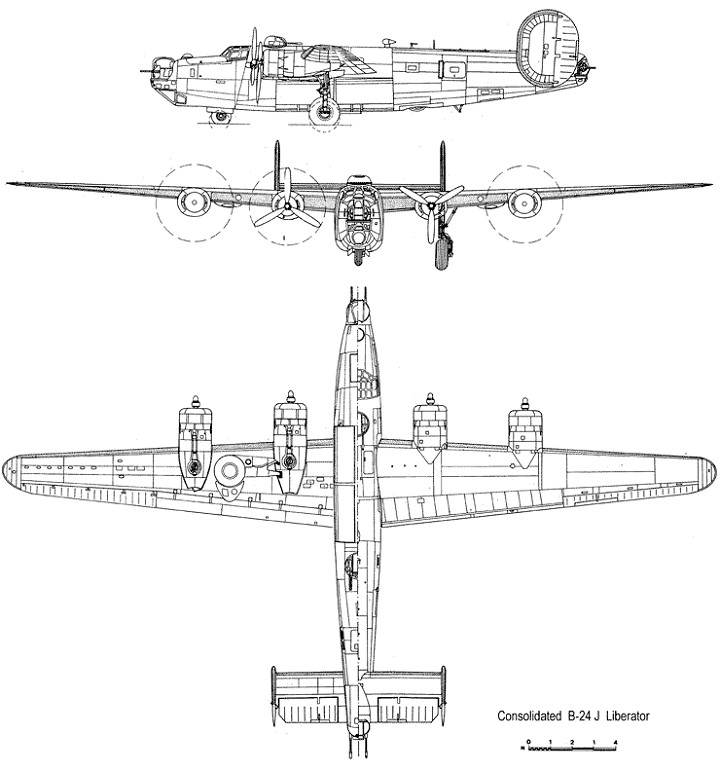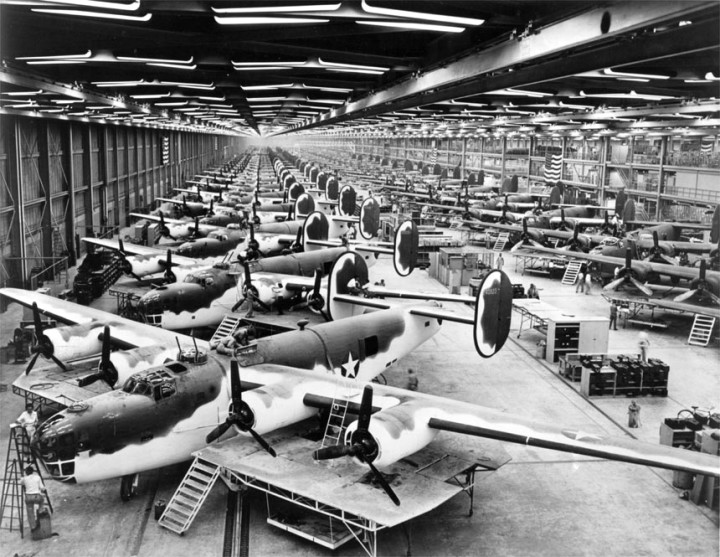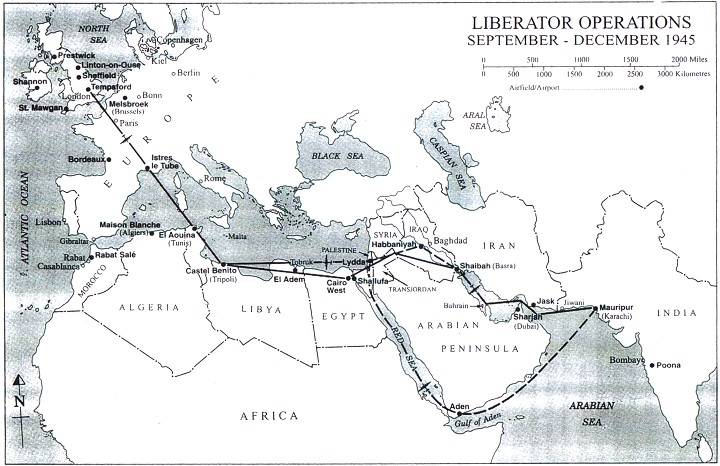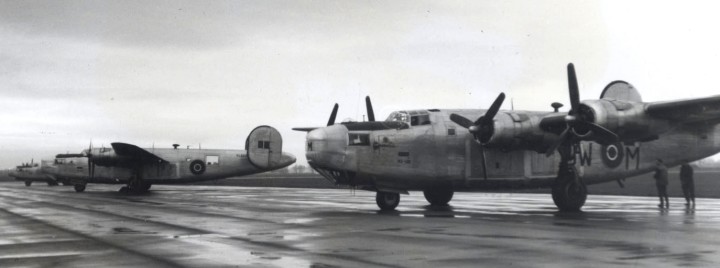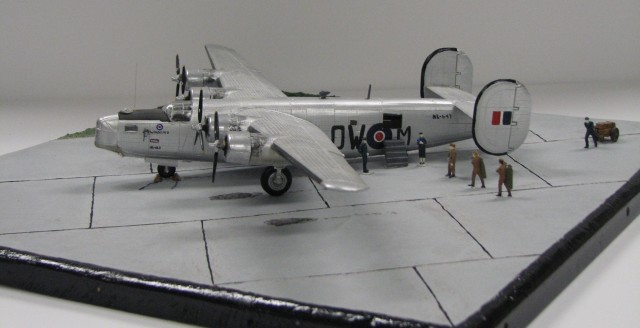B24 Liberator
| The B24 Liberator was one of the Americans' leading heavy bombers of the Second World War. Consolidated Vultee Aircraft Corporation, Douglas North American and Ford built more than 19000 of them in several versions. Under the Lend-Lease Act the United States transferred more than 2000 early model Liberators to the RAF and Commonwealth air forces. RCAF Liberators were converted from maritime reconnaissance aircraft and bombers to passenger carriers by Scottish Aviation at their Preswick base. No 426 Squadron, now operating out of RAF Station Tempsford, received converted MkVI and MkVIII, Jul 45. Thus began the transport era for the Thunderbirds. |
An India bound Thunderbird crew of Liberator "Ottawa" watch comrades take off before their departure, (l to r) F/O G. More, pilot (Winnipeg, Manitoba), WO1 J.V. Boyczuk, co-pilot (Bayard, Saskatchewan), F/O H.A. Norton, navigator (Acton, Ontario), F/O H.A. Rawlinson, wireless operator (Millerville, Alberta), and F/L G.N. Goodman, DFC, flight engineer (Picton, Ontario), Oct 45. | |
The Liberator was powered by four 1200 horsepower Pratt and Whitney 14 cylinder two row radial engines, a maximum speed of 270 mph, and a service ceiling of 32000 feet. Fully loaded with a bombload of 12800 pounds it's range was only 990 miles, but with a reduced load it could make 2290 miles. The aircraft was a stable, quiet and comfortable ride; delightful change for the RCAF crews that had put up with the roaring engines and freezing drafts of the Lancaster and Halifax.
In its thirteen weeks as an operational long range transport squadron, the Thunderbirds made 118 outbound and 114 inbound flights (the four uncompleted homeward flights were unserviceable (u/s) Liberators left at El Aouina, Cairo West, Shaibah and Castel Benito). They scheduled a total of 143 round trips, of which twenty were canceled; eleven due to weather, seven for lack of serviceable aircraft, two because of mechanical failures. The other five cancellations includes four that went u/s at Melsbroek, and one that returned to Tempsford because Melsbroek was empty of troops. On the 232 completed flights, more than 5500 passengers, most of them British Army and RAF personnel, traveled to destinations between Tempsford and Mauripur. Only one woman was transported, on a mercy flight, with her severely wounded husband.
The Thunderbirds' trooping operation involved more than 5600 hours, about one million miles, and no injuries to passengers or crew. Transport Command's only squadron to complete all its operational assignments without a single accident or injury of any kind to a passenger. It was a remarkable achievement attributable not only to the skill, experience and committed effort of the aircrews and ground staff, but also to the 3700 hours of non-operational flying, mostly devoted to training, performed during this period. An unofficial count of decorations won by Thunderbirds during this period include; thirty-three Distinguished Flying Crosses, and one Bar to a DFC; four Distinguished Flying Medals; one Croix de Guerre (France); and three Mention in Despatches. Albeit, most of these awards were for actions taken during the previous hostilities. | |
No 426 Squadron Liberator flight line, Tempsford, Dec 45. | |
This model of a Thunderbird Liberator "Winnipeg", OW "M", loading passengers for a trooping run, was constructed by MCpl R. Nielson and Capt W. Sturgeon in 81, the platform was resurfaced and the model repaired by Sgt Lapierre in 05, and is housed in the main display case between the entrances of Blanchard Hall, Dishforth Building, Trenton. | |















































